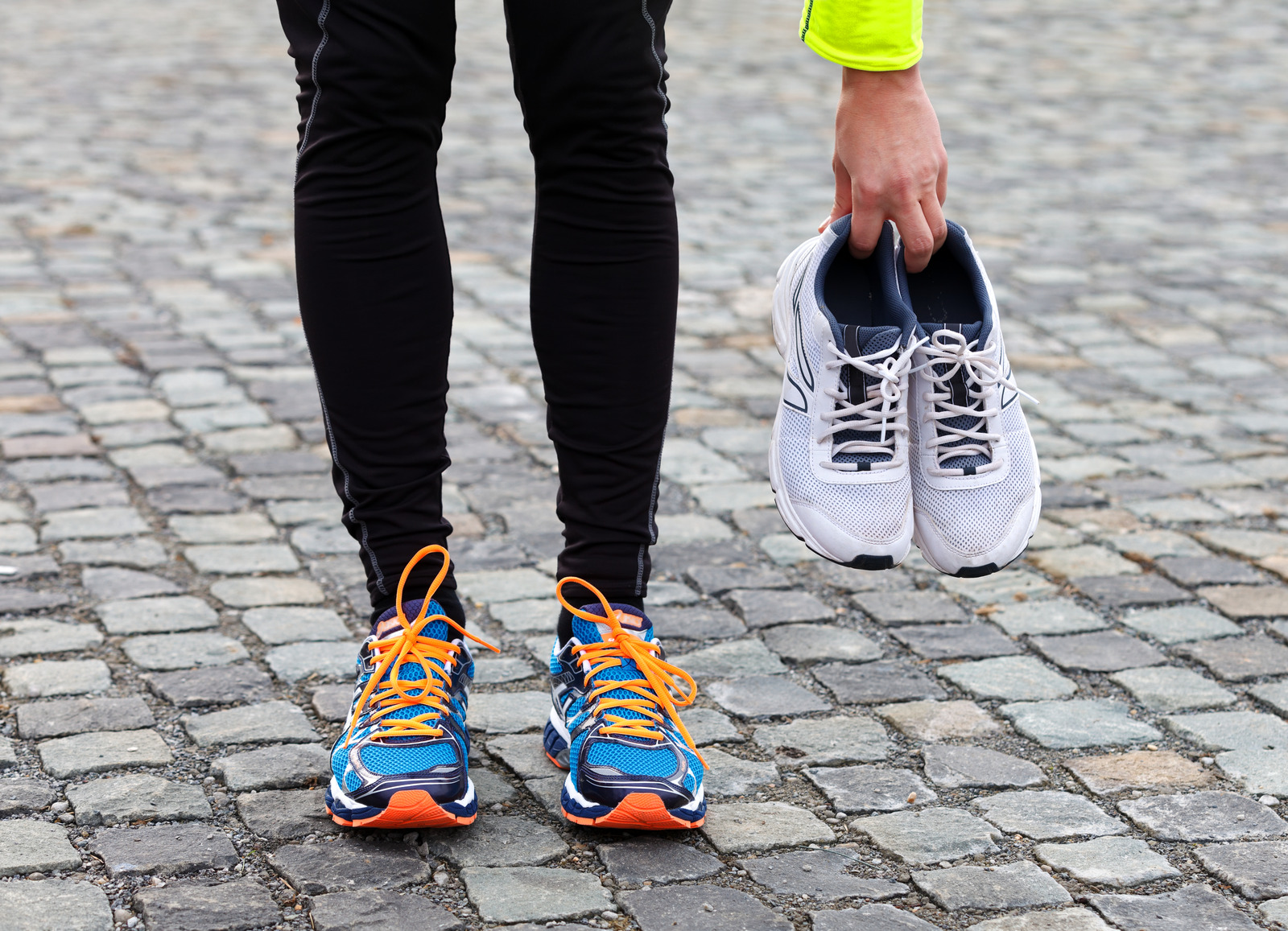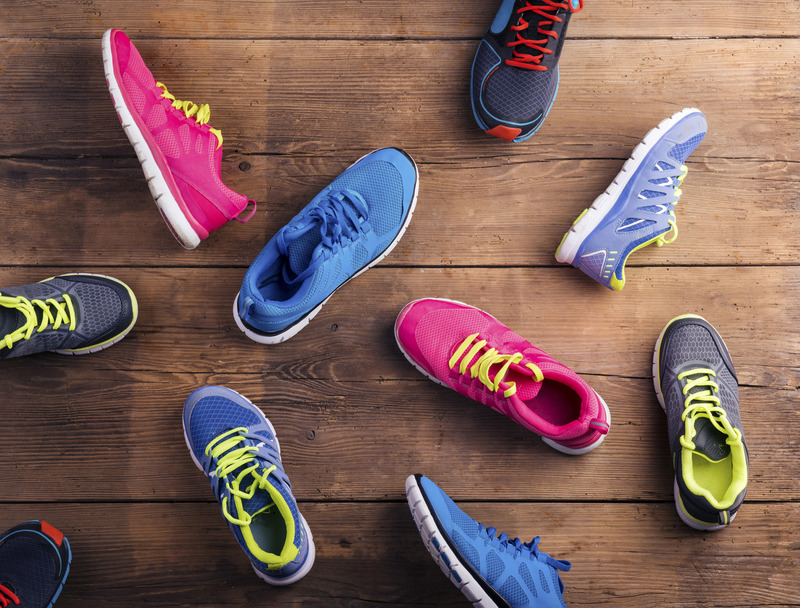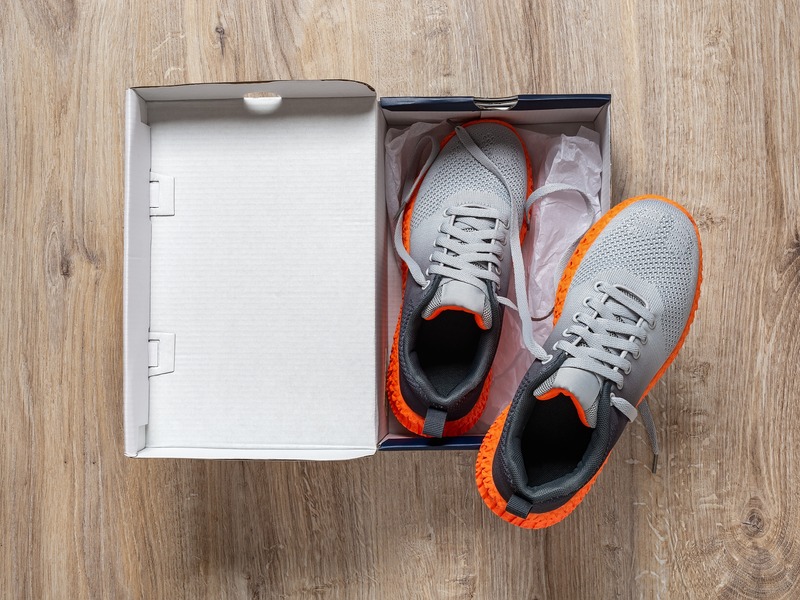Running Shoe Lifespan: When to Replace Your Trainers
June 21, 2024

When you buy through links on our site, we may earn an affiliate commission.
There's no better feeling than lacing up a brand-new pair of running shoes. The spring in your step, the secure fit, the promise of miles to come – there's no other excitement quite like it.
But while that new-shoe feeling is unbeatable, it's important to remember that even if you find the best running shoes, they have a limited lifespan. Understanding when (and why) to replace your shoes is important for optimal performance and ensuring you stay injury-free.
Worn-out shoes can seriously threaten your physical well-being, often leading to discomfort and derailing your training. So, let's quickly equip you with the knowledge to make informed decisions about your running shoe lifespan to ensure every mile you run remains enjoyable.
Mileage Matters: The 300-500 Mile Rule
First and foremost, the tell-tale sign that you need to replace your running shoes is when they reach a certain mileage threshold. The general rule of thumb is to replace them every 300-500 miles.
You're right if you think 200 miles is a pretty wide range. The problem is wear and tear on running shoes can't be accurately calculated by an arbitrary number of miles. There are several factors at play.
For instance, your running style plays a significant role. Heel strikers tend to wear down the heels of their shoes faster, while forefoot strikers put more stress on the front. Other contributing aspects to replacement age include your weight, the surfaces you run on, and even the specific type of running shoe you wear.
A heavier runner will naturally put more stress on their shoes, requiring more frequent replacement. Similarly, running on pavement wears down shoes faster than a treadmill, and trail running shoes, designed for rugged terrain, tend to be more durable.
Thus, it pays to look at some of the visual cues. Watch out for things like compressed midsoles and worn-out tread on the outsole – these are telltale signs that your shoes might be nearing retirement.
Lastly, and perhaps easiest to sniff out when looking for clues that your shoes are nearing the end of their useful life, is how they feel underfoot. Once shoes start losing their “bounce,” you know they are ready to be replaced. This happens when the foam in the midsole no longer decompresses properly, leaving you with less support, less cushioning, and less help propelling you forward.
Time Takes Its Toll: Expiration Dates Beyond Mileage
As explained, mileage is a relatively reliable indicator of replacement times, but what if you haven't been racking up the miles? Will shoes just keep going until you hit those thresholds mentioned above?
The answer is no. As with everything, the passing of time will hurt your running shoes' performance, even if you don't use them much. The materials naturally degrade over time, the glue holding the shoe together can deteriorate, and the overall structure weakens.
Even lightly used shoes can need replacing within a year or so, especially if they are stored in hot or humid conditions. Therefore, depending on use and storage conditions, it's best to replace your running shoes every 6-12 months, even if you haven't reached the mileage benchmark. Doing so ensures you're running on optimal support and cushioning.
That said, some shoes see much lighter use (such as racing flats) and could last longer than a year. However, even exceedingly lightly used shoes should be replaced within 24 months, regardless of all the factors discussed above.
The Hidden Dangers Continuing with Worn-Out Shoes
Running in worn-out shoes is akin to driving a car with worn-out shock absorbers – you're in for a rough ride. As the cushioning and support of your shoes diminish, your joints and muscles absorb more impact with each stride. And that's when the injuries tend to occur.
Shin splints, a painful inflammation of the muscles surrounding the shinbone, are often triggered by inadequate shock absorption. Plantar fasciitis, a sharp pain in the heel and arch of the foot, can also be aggravated by worn-out shoes. Other conditions that can be brought on by running in worn-out shoes include runner's knee and stress fractures – small cracks in weight-bearing bones (often in the foot).
In short, the risk is just not worth it. A relatively small outlay on a new pair of shoes can save you months on the sidelines and potentially thousands in medical bills (depending on your insurance).
Making Your Shoes Last: Smart Habits for Longer Life
You've invested good money in your running shoes, so it's only natural to want to maximize their lifespan. While no shoe lasts forever, incorporating a few simple habits into your routine can help you get the most out of your trainers.
Rotate With Another Pair
Don't be a one-shoe wonder! Rotating between two pairs of running shoes allows the cushioning material in each pair to fully decompress between runs. This simple practice can significantly extend the life of both pairs.
Stick to Running
It's tempting to wear your running shoes for everything, but resist the urge. Using them for heading to the grocery store or casual wear adds unnecessary mileage and stress and prevents them from ever fully decompressing. Preserve your shoes' lifespan by reserving them solely for running.
Air Out Your Shoes
Give your shoes a breather after a rainy or sweaty run. Remove the insoles and allow both the insoles and shoes to air dry completely. Trapped moisture can accelerate the breakdown of crucial show components, and running on wet foam inhibits its springiness.
Temperature Control
Just like extreme temperatures aren't ideal for your body, they're not great for your shoes either. Avoid storing your running shoes in excessively hot or cold environments, such as a freezing car trunk or a sun-baked garage. Extreme temperatures can damage the materials and adhesives, shortening the lifespan of your shoes. Humidity is another thing to avoid due to moisture trapping.
None of these tips are particularly taxing to introduce to your running routine. So implement them and reap the rewards by improving your running shoe lifespan and reducing your annual spend on replacements.
Get the Most Out of Your Miles With Timely Running Shoe Replacement
Investing in a new pair of running shoes is ultimately an investment in your health and running journey. Now that you've got a better understanding of the factors influencing shoe lifespan and how to recognize the signs of wear and tear, you can make informed decisions about when it's time for a replacement.
Remember, prioritizing your physical well-being by running in supportive and cushioned shoes will keep you injury-free and enjoying the miles ahead. Trying to eke every last mile out of your favorite pair will likely result in avoidable injury.
So do yourself a favor and invest in your health by regularly replacing running shoes approaching the end of their life cycle. And when it's time to get new running shoes, consult RunningShoeDeals.com to find your replacements for the best possible price.
We find deals and discounts from dozens of leading retailers on hundreds of running shoe models. Enter your preferred running shoes in our search bar to see how much you could save today.


